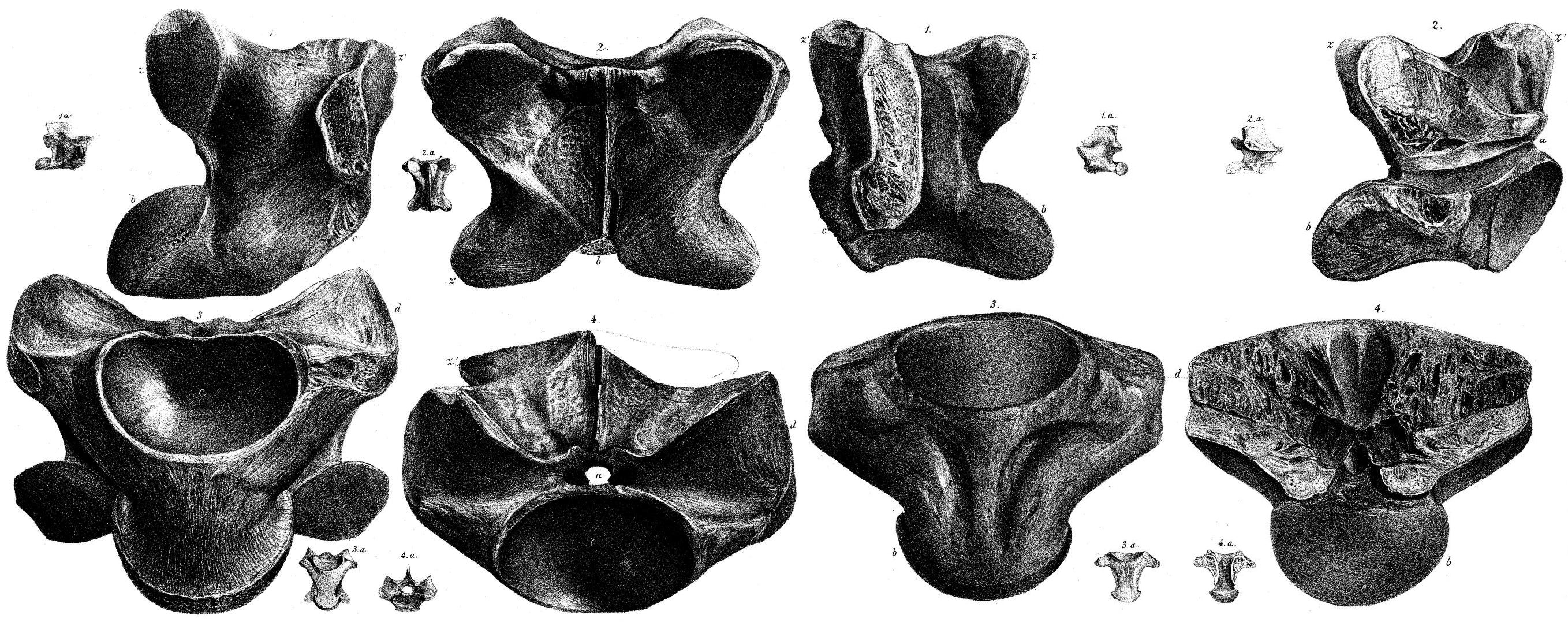|
Megalania Prisca
Megalania (''Varanus priscus'') is an extinct species of giant monitor lizard, part of the megafaunal assemblage that inhabited Australia during the Pleistocene. It is the largest terrestrial lizard known to have existed, reaching an estimated length of 3.5 to 7 metres (11.5 – 23 ft), and weighing between , but the fragmentary nature of known remains make estimates highly uncertain. Megalania is thought to have had a similar ecology to the living Komodo dragon (''Varanus komodoensis''). The youngest fossil remains of giant monitor lizards in Australia date to around 50,000 years ago. The first indigenous settlers of Australia might have encountered megalania, and been a factor in megalania's extinction. While originally megalania was considered to be the only member of the titular genus "''Megalania''", today it is considered a member of the genus ''Varanus'', being closely related to other Australian monitor lizards. Taxonomy Sir Richard Owen described the first kno ... [...More Info...] [...Related Items...] OR: [Wikipedia] [Google] [Baidu] |
Pleistocene
The Pleistocene ( , often referred to as the ''Ice age'') is the geological Epoch (geology), epoch that lasted from about 2,580,000 to 11,700 years ago, spanning the Earth's most recent period of repeated glaciations. Before a change was finally confirmed in 2009 by the International Union of Geological Sciences, the cutoff of the Pleistocene and the preceding Pliocene was regarded as being 1.806 million years Before Present (BP). Publications from earlier years may use either definition of the period. The end of the Pleistocene corresponds with the end of the last glacial period and also with the end of the Paleolithic age used in archaeology. The name is a combination of Ancient Greek grc, label=none, πλεῖστος, pleīstos, most and grc, label=none, καινός, kainós (latinized as ), 'new'. At the end of the preceding Pliocene, the previously isolated North and South American continents were joined by the Isthmus of Panama, causing Great American Interchang ... [...More Info...] [...Related Items...] OR: [Wikipedia] [Google] [Baidu] |
Varanidae
The Varanidae are a family of lizards in the superfamily Varanoidea within the Anguimorpha group. The family, a group of carnivorous and frugivorous lizards, includes the living genus '' Varanus'' and a number of extinct genera more closely related to ''Varanus'' than to the earless monitor lizard (''Lanthanotus''). ''Varanus'' includes the Komodo dragon (the largest living lizard), crocodile monitor, savannah monitor, the goannas of Australia and Southeast Asia, and various other species with a similarly distinctive appearance. Their closest living relatives are the earless monitor lizard and chinese crocodile lizard. The oldest members of the family are known from the Late Cretaceous of Mongolia. Taxonomy The Varanidae were defined (using morphological characteristics) by Estes, de Queiroz and Gauthier (1988) as the clade containing the most recent common ancestor of ''Lanthanotus'' and ''Varanus'' and all of its descendants. A similar definition was formulated by Conrad ''et al ... [...More Info...] [...Related Items...] OR: [Wikipedia] [Google] [Baidu] |
Freshwater Crocodile
The freshwater crocodile (''Crocodylus johnstoni''), also known as the Australian freshwater crocodile, Johnstone's crocodile or the freshie, is a species of crocodile endemic to the northern regions of Australia. Unlike their much larger Australian relative, the saltwater crocodile, freshwater crocodiles are not known as man-eaters, although they bite in self-defence, and brief, nonfatal attacks have occurred, apparently the result of mistaken identity. Taxonomy and etymology When Gerard Krefft named the species in 1873, he intended to commemorate the man who first reported it to him, Australian native police officer and amateur naturalist Robert Arthur Johnstone (1843–1905). However, Krefft made an error in writing the name, and for many years, the species has been known as ''C. johnsoni''. Recent studies of Krefft's papers have determined the correct spelling of the name, and much of the literature has been updated to the correct usage, but both versions still exist. Accor ... [...More Info...] [...Related Items...] OR: [Wikipedia] [Google] [Baidu] |



